We left Sorrento with our private transfer and had an interesting drive to Amalfi.
The road we were intending to travel on was closed at that time of the day so an alternate was taken. Our driver Carlos was very friendly telling us all about each village as we passed through and what they were famous and/or best for, whether it be pasta or wine or something similar.
It was interesting to note how Carlos drove with his van wing mirrors constantly bent in, only adjusting them out when he need to see something. Given the small gaps they drive through, it was understandable.
Amalfi Coast
We arrived in Amalfi and on check-in, realised this was the most upmarket hotel of our three. Very nice it was too being a former monastery.
We wandered down to the Main Street taking the path along the bottom of the cliff. It was late and in one of the small squares, a really nice restaurant owner made a good sales pitch for his family owned establishment with home-cooked meals.
We said thanks and look at a few others but he’d convinced us to come back. We had a superb meal there although I troughed so much food washed down with two draft Morettis, I had a gut ache later!
Next day, we wandered back and the views are stunning from the hotel down to the main area of Amalfi.
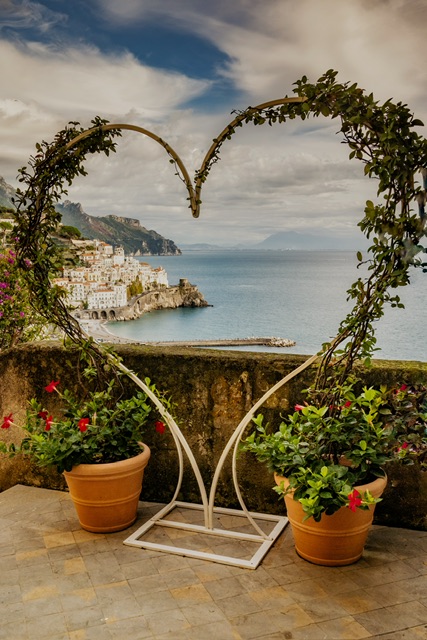
A clear view of the coastline from one of the hotel paths.

We made our way down to the harbour and walked along the jetty, and onto the small beach.
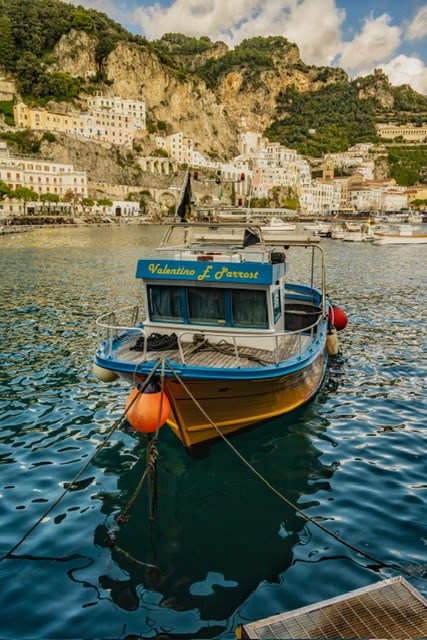
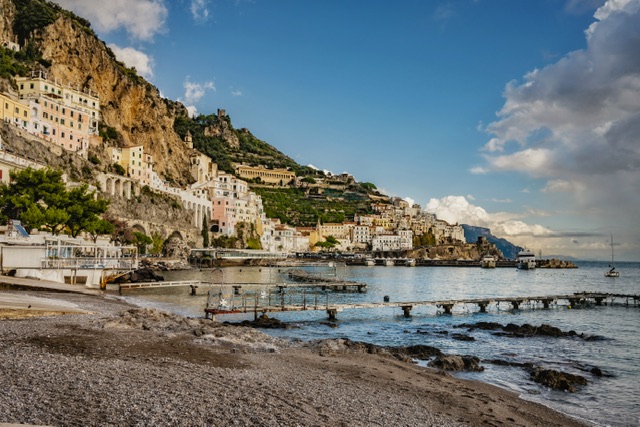
We wandered towards the bus station as we wanted to check out travel options for Ravello, and also see what was on offer for boat trips.
I liked these buildings and their colours.

As we got closer to the bus station, I quite liked the shot below of reflections in a puddle.
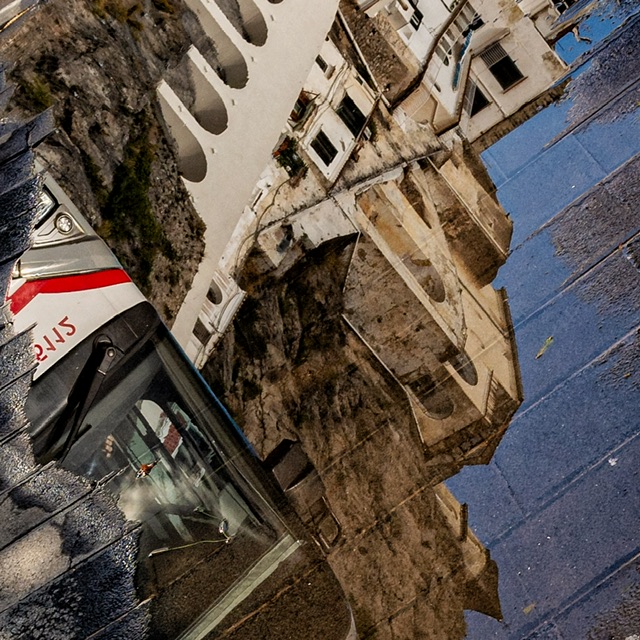
On looking around, we could see a few boat trip outlets and some bus stops. We had Ravello in our sights and further research suggested it may be more time efficient to take a taxi.
As we walked to the Main Street in Amalfi, we decided to look round the cathedral.
Amalfi Cathedral (Italian: Duomo di Amalfi; Cattedrale di Sant’Andrea) is a medieval Roman Catholic cathedral in the Piazza del Duomo, Amalfi, Italy. It is dedicated to the Apostle Saint Andrew whose relics are kept here. Formerly the archiepiscopal seat of the Diocese of Amalfi, it has been since 1986 that of the Diocese of Amalfi-Cava de’ Tirreni.
Begun in the 9th and 10th centuries, it has been added to and redecorated several times, overlaying Arab-Norman, Gothic, Renaissance, Baroque elements, and finally a new 19th century Norman-Arab-Byzantine facade. The cathedral includes the adjoining 9th-century Basilica of the Crucifix. Leading from the basilica are steps into the Crypt of St. Andrew, where his relics can be found.
You climb the wide steps to the entrance of the cathedral but venture left and to the side to pay and enter via the courtyard with the entrance actually the exit.
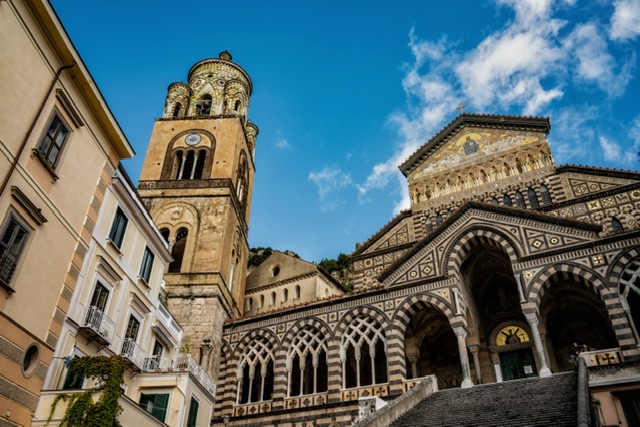
The courtyard was lovely and I grabbed this shot of an impressive mosaic.

As we entered the first part of the cathedral which looked like a side chapel, there were lots of things to see and a few display cabinets.
I took this shot of a brass mural and really like the textures.
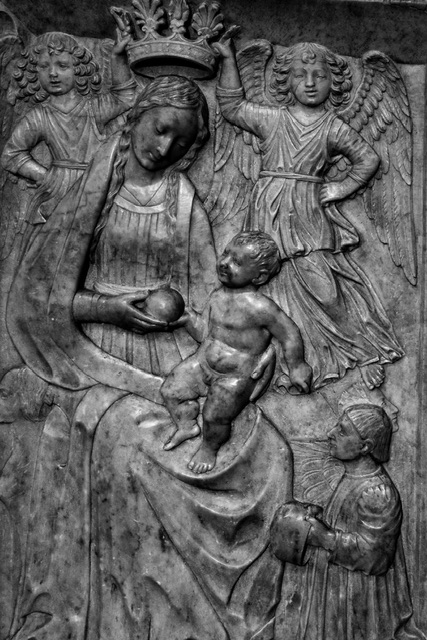
There were impressive sights all round including murals on the walls.

There was a hanging structure of Jesus and an interesting shadow being cast of this being cast onto the cathedral wall which I had to grab a shot of, and also two priests or whatever the order of that time and religion was, also with a shadow of the crucifixion.
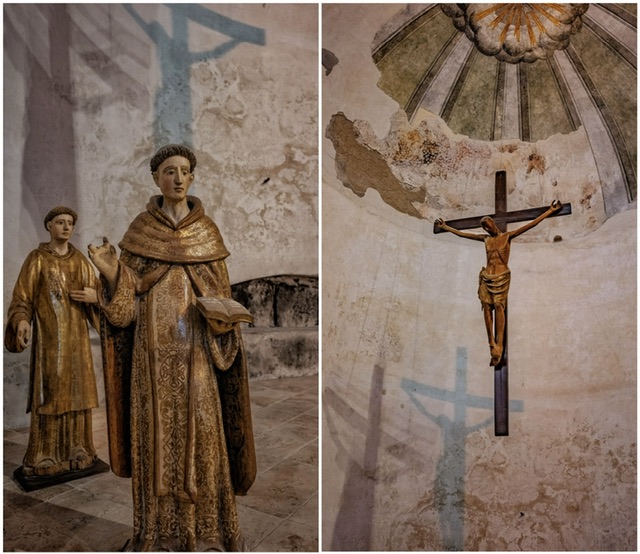
The art in this cathedral was amazing.
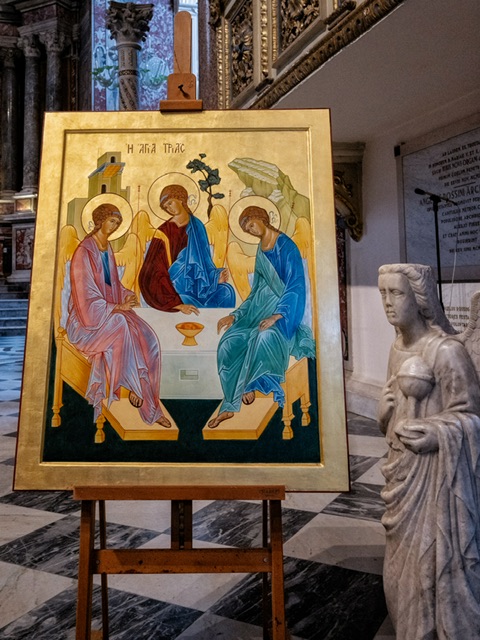
We left the cathedral, picked somewhere to eat the headed back to the hotel.
We looked into boat trips but decided on a visit to Ravello as it came highly recommended.
From what we could see, a bus or taxi was the best mode of transport but we discovered the bus takes an hour or more each way, so we decided to bite the bullet and get a cab.
Ravello
At the main travel hub/roundabout in Amalfi, it appeared a cab would cost us €60 one way! This price was advertised up on a board with prices so it seemed a genuine “this is the price” statement.
Having enjoyed our last sit down breakfast, we were too late to get the bus so we decided, based on the low likelihood that we would come back here, we would do it!
The taxi ride was fast and didn’t seem that far at all. Apart from some temporary traffic lights causing a brief delay, we could see the taxi is a complete rip-off.
There were two gardens on our bucket list and obviously the views of the coast from each. We made our way to the first one taking in the sights as we walked through the pathways and alleyways.
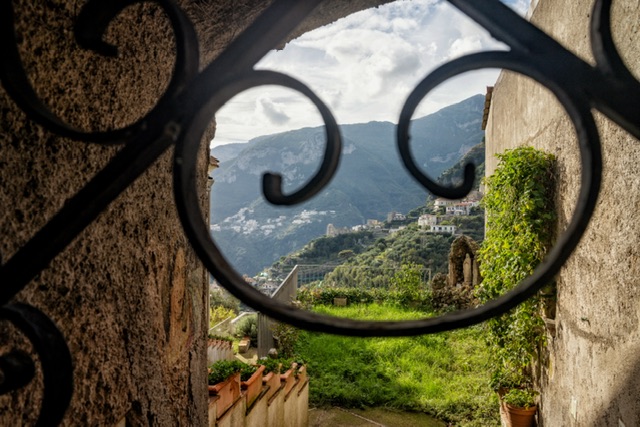
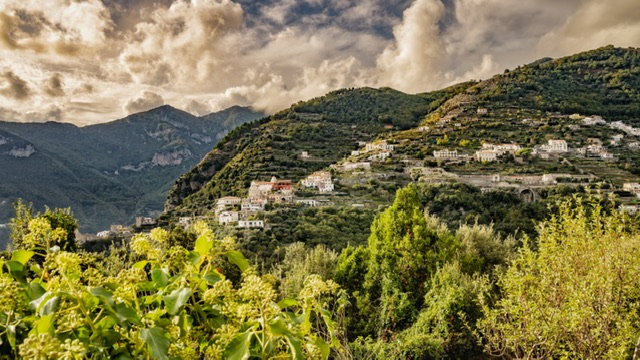
Gardens 1 – Villa Cimbrone
Sitting high atop a promontory that offers stunning views of the Mediterranean and the dramatic coastline below, the Villa Cimbrone is the crown laurel of the Ravello.
Its origins date back to the 11th century, but the villa and the gardens were extensively renovated by a British nobleman, Lord Grimthorpe, in the early 20th century.
With its expansive gardens and dramatic views, the villa is a popular place for weddings, honeymoons, and receptions. The villa is a private 5-star hotel (Hotel Villa Cimbrone), but the gardens are open to the public and it ranks, perhaps, as the most memorable sight on the Amalfi Coast.
On entering the gardens, there is a really nice courtyard to explore.

Then you are greeted to some amazing gardens.

As you approach the sea end of the gardens, some impressive sculptures are on show.
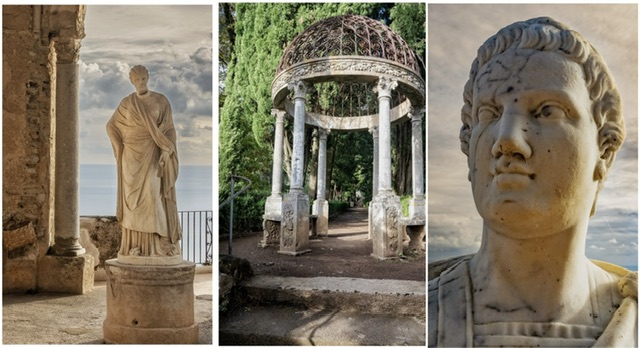
There are multiple paths to take and some lovely features.
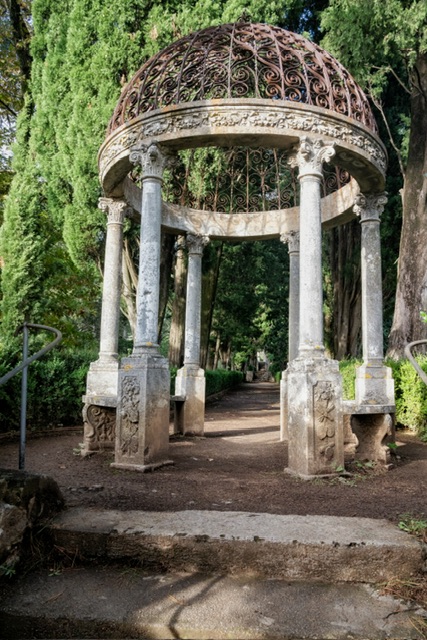
The image below is a stunning view of the populated area on the side of the hills.

I took the following shot as a close up of a structure of a man with his head on the floor.

We made our exit from these amazing gardens and onto the next one.
On the walk to Villa Rufolo, I captured some interesting scenes.
The criss-cross shadows on this path caught my eye.
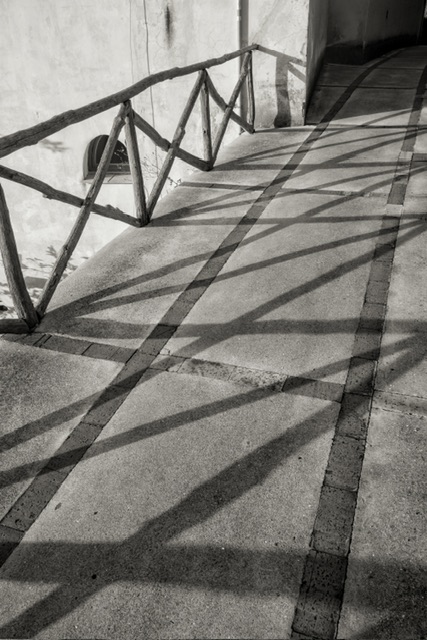
A trip to Italy wouldn’t be legitimate without a photo of some lemons.

We crossed a courtyard as we approached the path to Villa Rufolo.
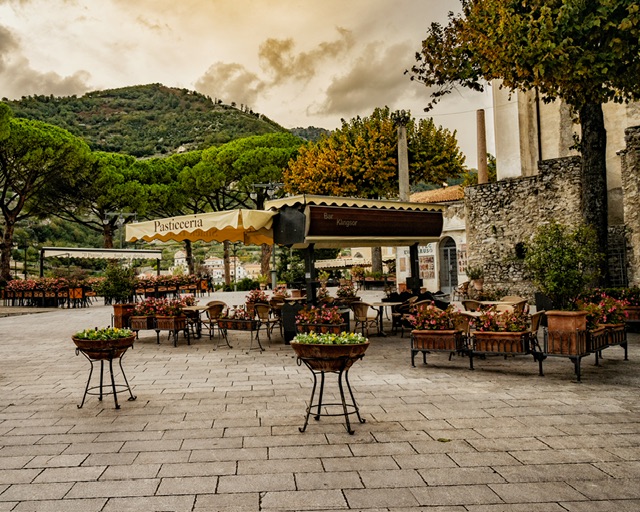
Gardens 2 – Villa Rufolo
The Rufolos represented the symbol of the economic and political power of medieval Ravello for over two centuries, only to decline in the short space of thirty years from the mid-13th century. to 1285, when they were completely ruined for having sided against the Angevins at the time of the Sicilian Vespers.
At the beginning of their family’s golden age they built the “house”, representative of their social status, which had to be grandiose, princely and rich. By fusing Arab and Byzantine architectural and decorative typologies with elements of local culture, they found the right language to express their power.
During the most fervent period, it is probable that Boccaccio met the Rufolos directly and stayed at their home; it is likely that ” the palace with a beautiful and large courtyard in the middle and with loggias and rooms and with wonderful gardens ” was indeed the garden of Villa Rufolo, while the reference to the family is direct in the famous novella dedicated to Landolfo Rufolo.
Life in medieval Ravello followed the decline of that of the coast linked to the decadence of the Amalfi Republic, and the Rufolo family, which had fallen into ruin, was forced to dismember the properties. The villa passed by right of succession to the Confalone and Muscettola families and subsequently to the D’Afflitto di Scala family in the 18th century. The latter made a great effort to make the palace habitable but the destruction of many valuable and valuable elements caused the ruin of a large part of the residence.
In the mid-nineteenth century the palace appeared as a ruin and only partially retained its original appearance which had undergone tampering after the decline of the famous lineage. A Scottish Lord, Sir Francis Nevile Reid , decided to buy it despite the unusability of the house. This man of great culture had the building restored and the garden terraces rearranged, creating the masterpiece that he made Wagner exclaim: “ Klingsor’s magic garden is found ”.
Reid closes a happy period in the history of the villa. With his death once again the villa was dismembered by his heirs and the furnishings sold. In 1974, the private property not yet annexed to public property was purchased by the EPT of Salerno.
The EPT managed the villa until 2007, the year in which management was entrusted to the Ravello Foundation which launched a series of initiatives aimed at the recovery, valorisation and protection of the monument.
We bought our tickets and made our way into the complex.
I saw a family having the photo taken across a balcony and asked Kathryn to walk round the other side so I could get a photo of her at this spot.
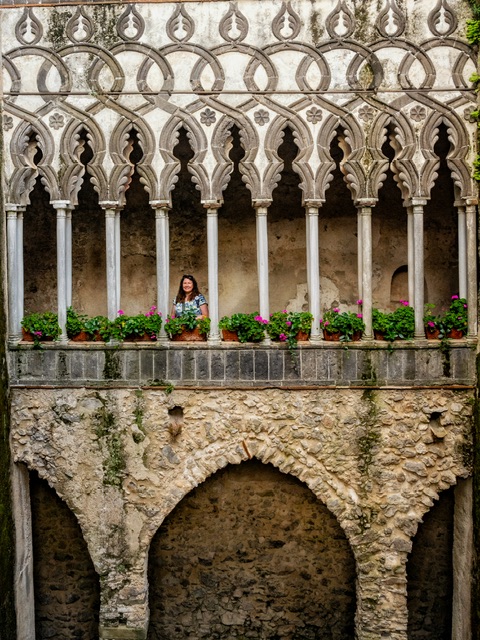
We walked through to a courtyard with some lovely flowers and plants.
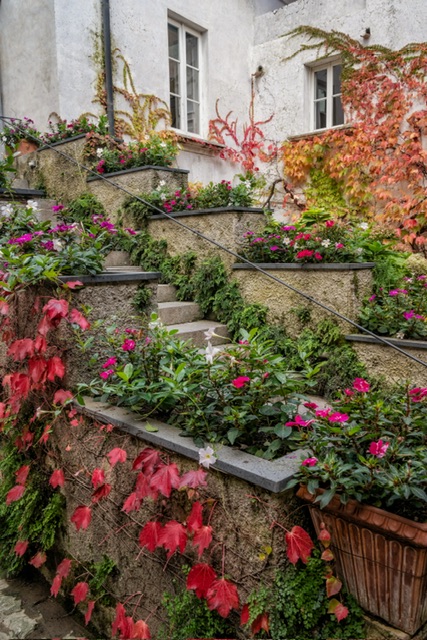
We climbed up a tower to catch the view from a higher viewpoint, but there turned out to be better views from the edge of the lower garden.

There wasn’t a perfect spot or shot to capture the iconic scene in brochures or books but you can’t complain about these views.

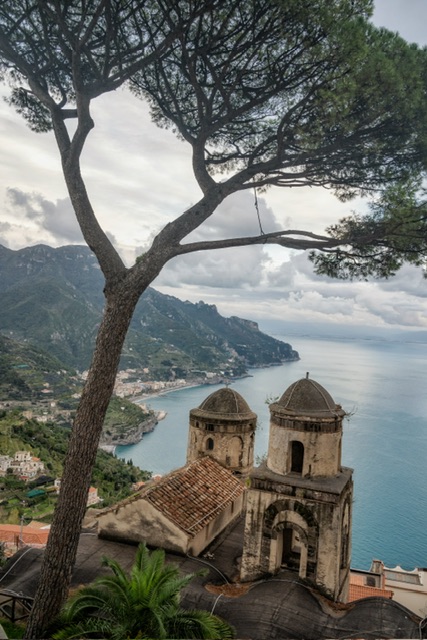
And that was our lot!
We met our cab driver at the agreed location and returned to Amalfi coughing up another €60!
A final meal in Amalfi was enjoyed before we walked back to our hotel and packed.
We had to be up early next morning to get our 07:00 transfer to Naples airport. Our hotel provided us a goody bag of pastries and a drink as we would miss their amazing breakfast.
Our driver had a fast pace to his driving making us both feel queasy in the speed in which he turned the twisty mountainous roads back to Naples.
He also seemed to enjoy pushing the limits of the Naples motorway / bypass so we were 20 minutes early arriving at the airport.
And that was a wrap, Kathryn’s 50th Birthday trip was complete.
Our thoughts since returning are that we enjoyed Naples the best, followed by Sorrento. Pompeii was so good, we wish we had a full day there.
Amalfi was lovely but we felt not a lot there to justify more than a day or two.
We did not see Vesuvius or Capri but we’re not crying about it.
An amazing and memorable trip though.
On the photography front, I really enjoyed using the Nikon retro-style camera but it’s significantly more bulky than the Fuji. I did enjoy the 28mm prime lens though compared to the 35mm equivalent on the Fuji. I wasn’t totally convinced that the Nikon offered me much more though so have decided to sell it.
Onwards and upwards…